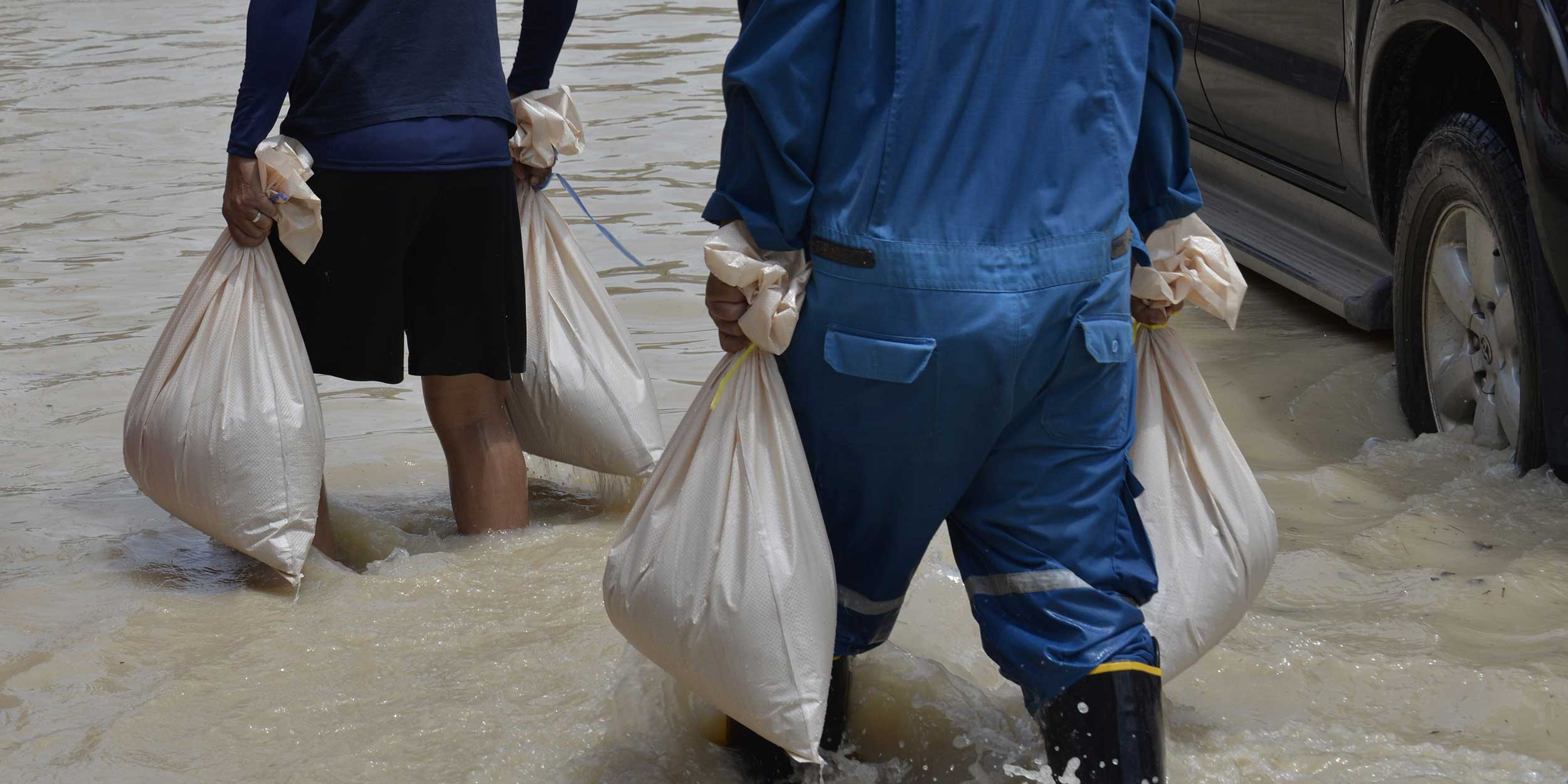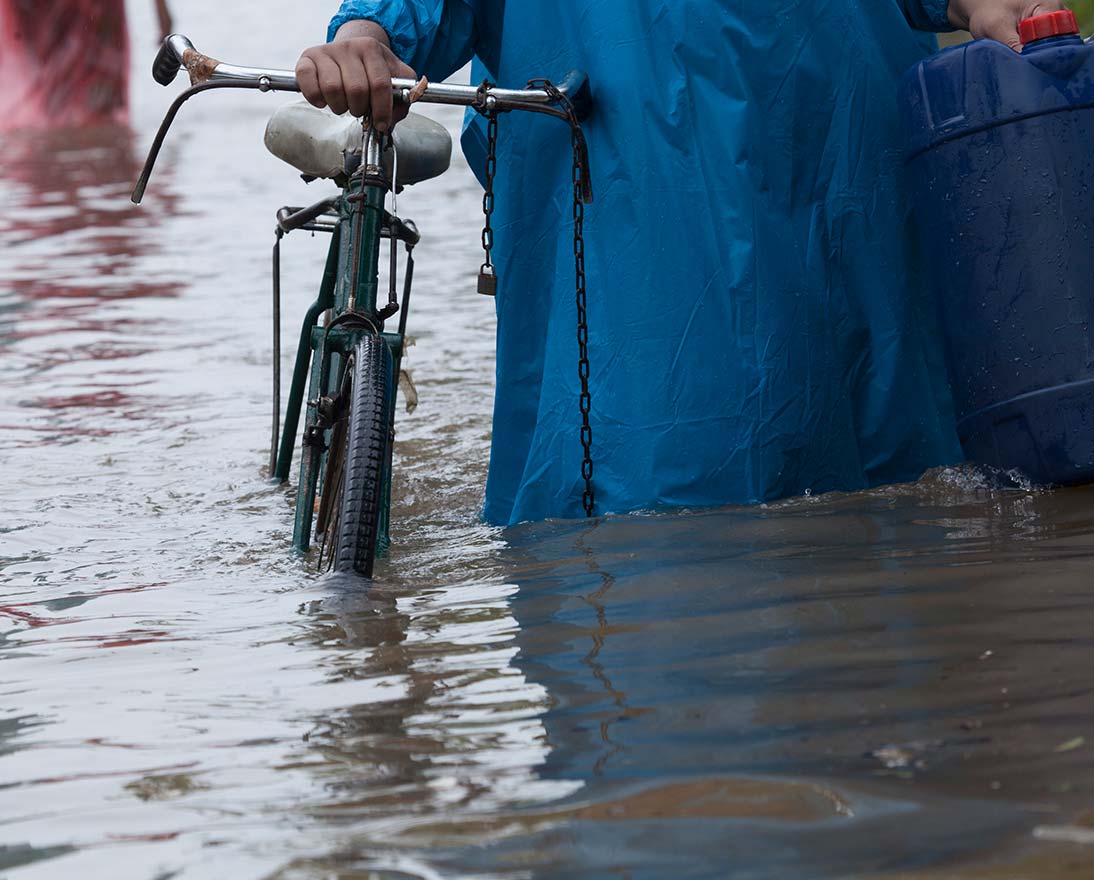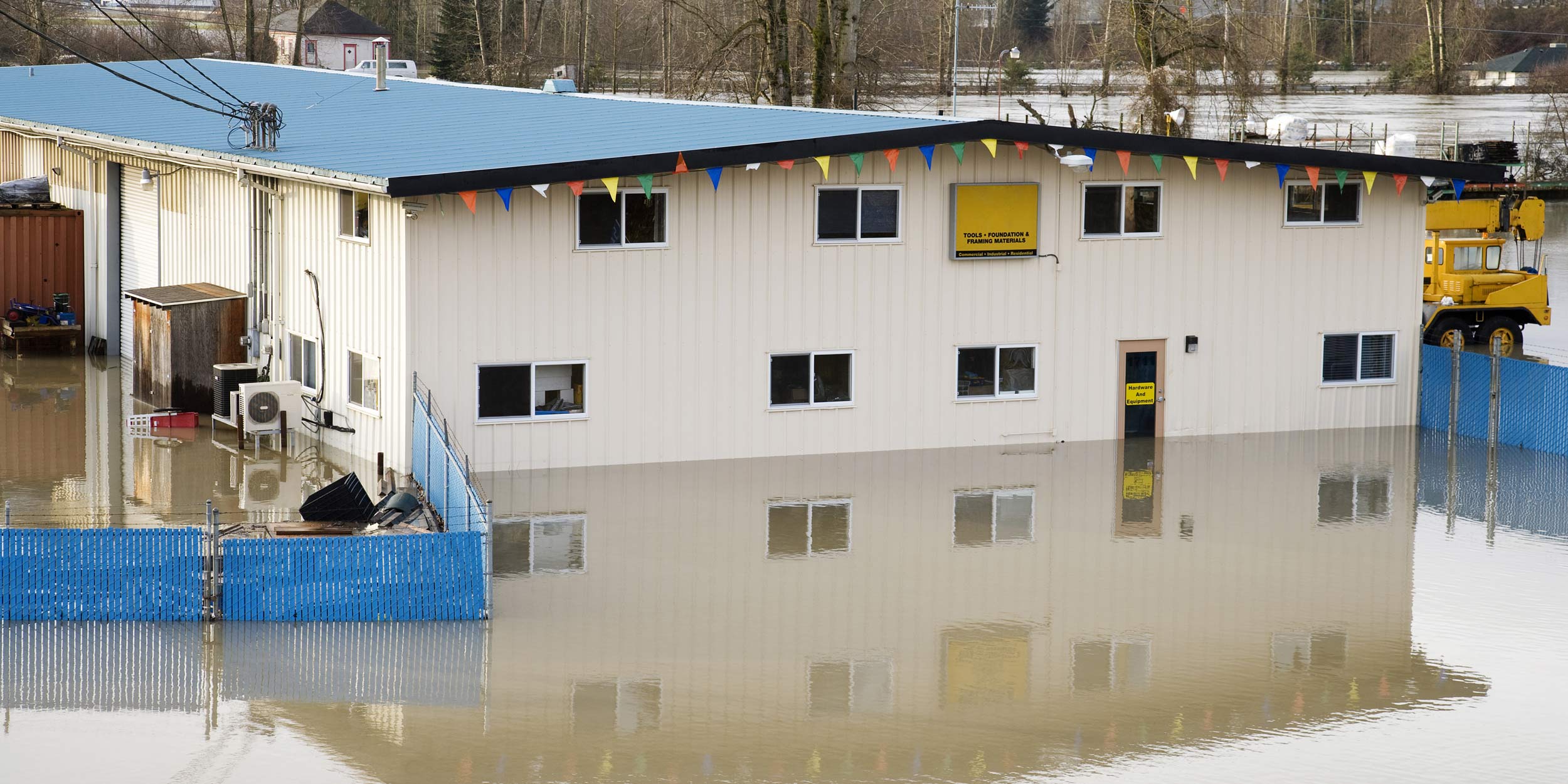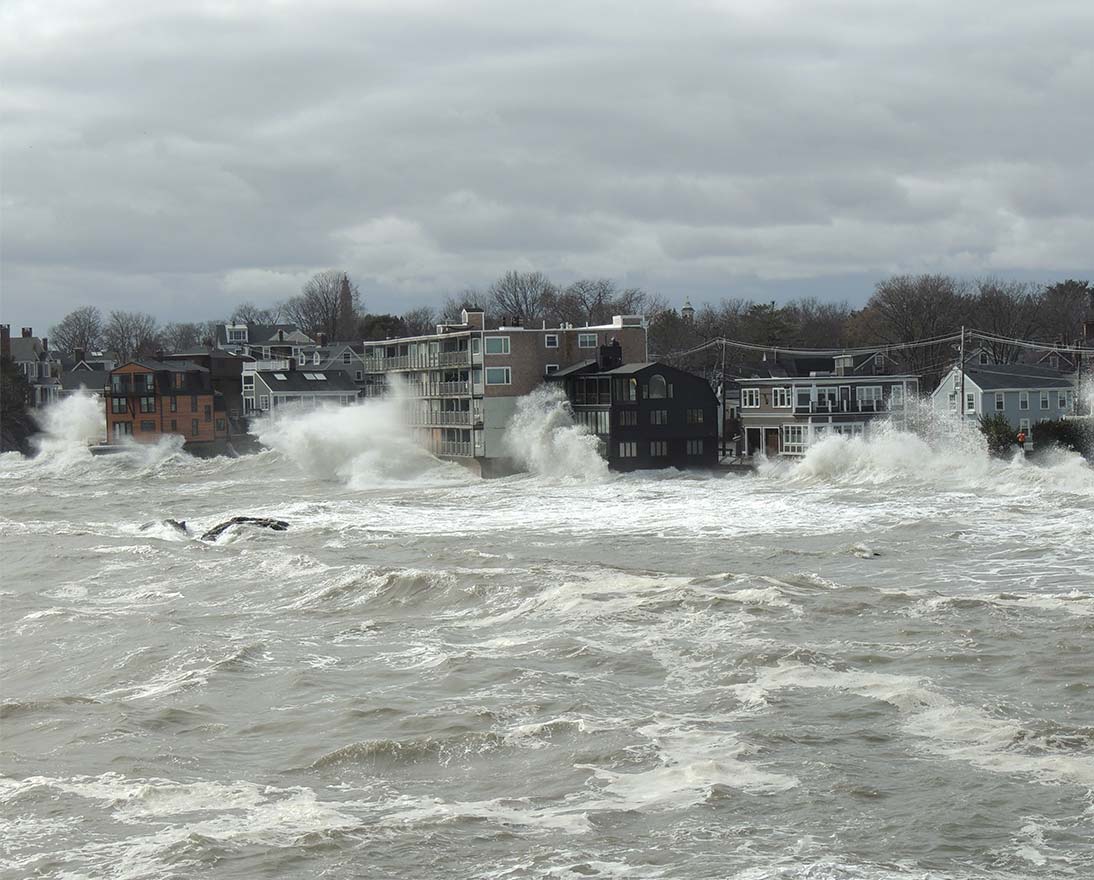COVID-19 creates the perfect storm for this year’s extreme weather season
Natural hazardsArticleJune 22, 2020
The consequences of COVID-19 in 2020’s extreme weather season and the five-step strategy that can help your business prepare for it
As the world attempts to take control of the COVID-19 pandemic, another global crisis is already ongoing. For the fourth consecutive year, extreme weather is considered the top global risk by likelihood over the next ten years, according to the World Economic Forum’s Global Risks Report produced in collaboration with Zurich Insurance Group.
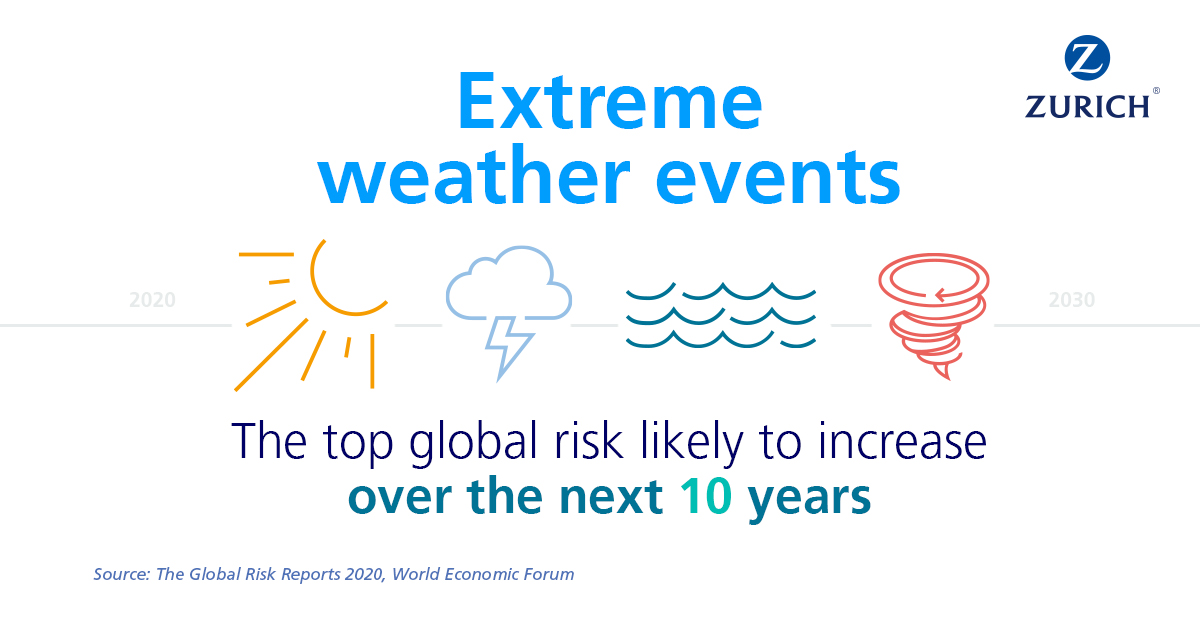
“When you look at cumulative global catastrophe losses over the past 30 years, 30 percent of those losses occurred in the last two years.”
June 2020 marks the commencement of this year’s season of extreme weather when some parts of the world habitually prepare for hurricanes and monsoons, while others ready themselves for droughts and heatwaves. But the seasonality of extreme weather should not lessen its significance nor induce complacency. Already the Bay of Bengal has experienced the most powerful cyclone in nearly two decades when in May of this year Cyclone Amphan hit the east coast of India and Bangladesh with widespread flooding and winds of up to 185 kilometers per hour.
“When you look at cumulative global catastrophe losses over the past 30 years, 30 percent of those losses occurred in the last two years.” says John Scott, Head of Sustainability Risk for Zurich Insurance Group.
Almost every observable metric shows a global warming trend, with the last five years registering as the hottest on record. “That warming increase can have a significant impact on extreme weather events, in particular prolonged periods of extreme heat or cold, and the repercussions of these global trends can vary significantly at a local level.” adds Scott.
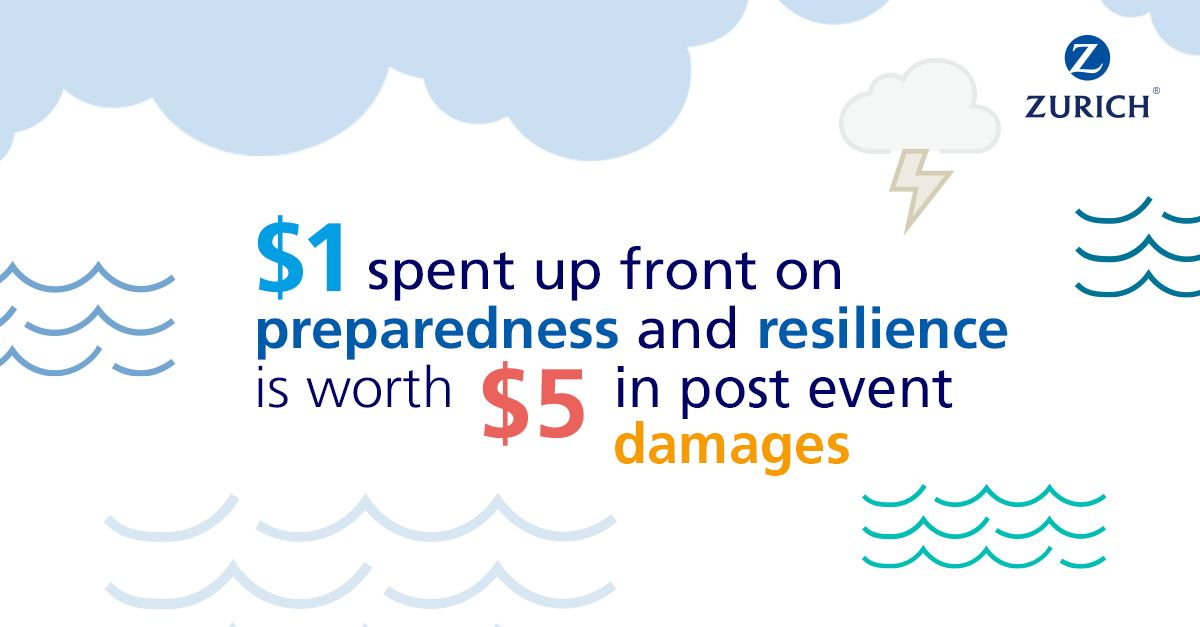
“Aside from extreme heatwave, land ice melting has caused sea levels to rise. When those rising sea levels combine with low air pressure, they can create significant levels of storm surge flooding at a local level, which is something we’ve seen an increase of.”
The unexpected outbreak of COVID-19 has compromised critical infrastructure and left societies, industries and governments overwhelmed. As the world enters this new heightened season of weather, business as usual is definitely not an option.
“The focus of many businesses right now, especially small and medium enterprises, is on survival” warns Dr. Amar Rahman, Risk Engineering Global Practice Leader, Zurich Insurance Group. “The resources committed by governments are totally focused on maintaining businesses, keeping economies going and getting people’s lives back to normal. In addition, the emergency and health services infrastructures are strained managing the ongoing pandemic. Even a relatively small natural hazard event would place disproportionate stress on the already-stressed system. What that means in terms of extreme weather events is to start the preparation phase much earlier than usual.”
Planning at a group level is the first of five preparation steps in Zurich’s whitepaper, ‘Managing the impacts of climate change: risk management responses – second edition’. To identify the broad business and strategic risks requires a detailed analysis of an entire business’s operations such as understanding major revenue streams, and the value chains of the network.
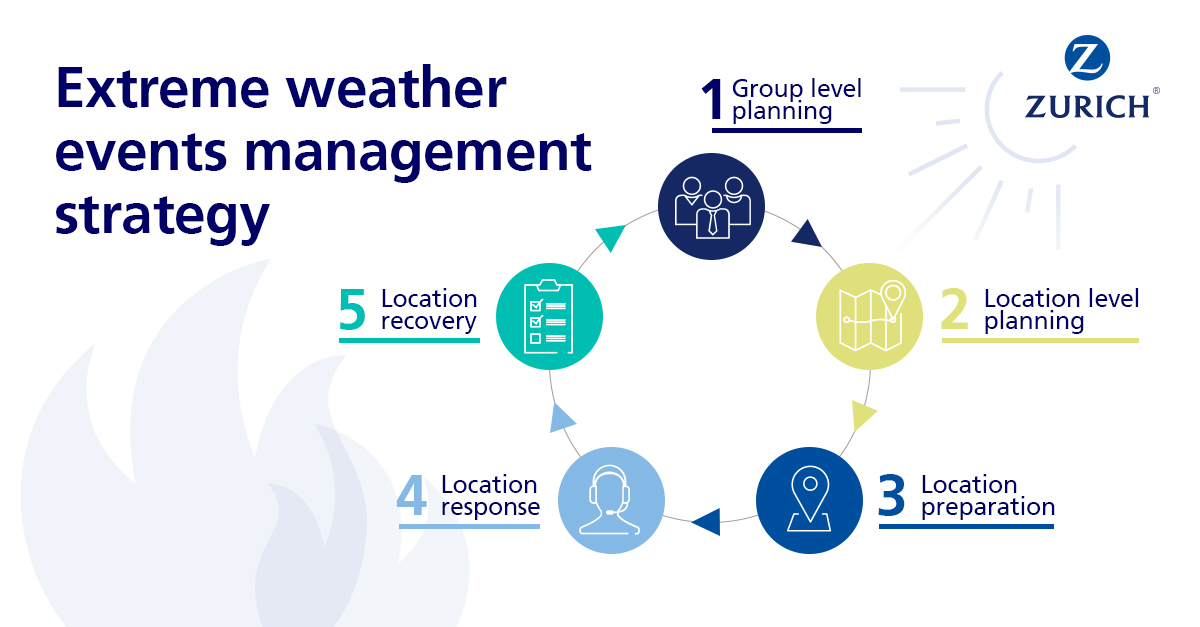
The second step requires a more granular approach by planning at each location such as defining an Emergency Response Team, identifying local authorities responsible for monitoring events, and determining the critical points of local value (local infrastructure, utilities) and supply chains.
“As an example of understanding the value chain, when we had the Thai floods in 2011, vulnerability was exposed at a regional level. Many businesses suddenly realized that Thailand is a main supplier of microchips, and therefore the lower tier suppliers were abruptly impacted, and business didn’t have products anymore to continue their operations. What this shows is that it’s absolutely vital for businesses to understand every level of their operations and treat the low probability, high impact events with the same level of risk management rigor as high frequency events.” adds Rahman.
“It is also important at this stage to understand who in your organization has the authority to implement the emergency response and business continuity plans, because some of the mitigating actions that you would need to implement during an extreme weather event could have financial repercussions on your operation.”
Step three is preparing a location when an event is imminent and getting the assigned people onsite to ensure a safe shutdown of operations. “In an environment where societies are locked down to reduce the spread of COVID-19, procuring items such as sandbags to manage flooding or panels to protect windows from flying objects is going to be a lot more difficult because all of that requires a human workforce. Who’s going to go and prepare those facilities?” says Scott.

The COVID-19 crisis has put a huge strain on emergency response services and fundamental supply chains. In Kolkata with rising infection rates, evacuating local populations from Cyclone Amphan, means a likely flare up of COVID-19 infections in crowded relief centers, and challenges in feeding so many displaced people by emergency response teams already stretched by the COVID-19 crisis. Should an extreme weather event occur, step four guides businesses through a location response plan, calling for clear and constant communication within the affected part of an organization as well as with external parties, all the while reducing as much superfluous communication between those not directly involved in the response.
The fifth and final step of Zurich’s management strategy deals with location recovery which largely depends on the thoroughness and preparation of the previous four steps. Site level operations opening up again will be dependent on rigorous safety checks. Learnings should be factored into every step of the management strategy to help build resilience.
“We’re nowhere near the end of the COVID-19 crisis, so it's never too late to start revamping and revising your strategy.”
This year’s season of extreme weather is already underway, requiring businesses to act now. “It’s not too late to re-evaluate the first steps of the five-step strategy.” says Rahman. “The situation is constantly evolving. What organizations need to do is to learn how to be more agile in these kinds of situations. We’re nowhere near the end of the COVID-19 crisis, so it's never too late to start revamping and revising your strategy.”
“We’re nowhere near the end of the COVID-19 crisis, so it's never too late to start revamping and revising your strategy.”
2020 will be a year like no other. While the world recovers from an extraordinary sequence of events, for businesses weathering the storm requires detailed preparation. “As a general rule, USD1 spent up front on preparedness and resilience is worth USD5 in post event damages.” concludes Scott. “Now is the time to adopt the motto, ‘Be prepared’.”
Key Takeaways:
- The seasonality of extreme weather should not lessen its significance nor induce complacency
- Now is the time to re-evaluate the first steps of your strategy
- Agility and preparedness is key to resilience against extreme weather events
